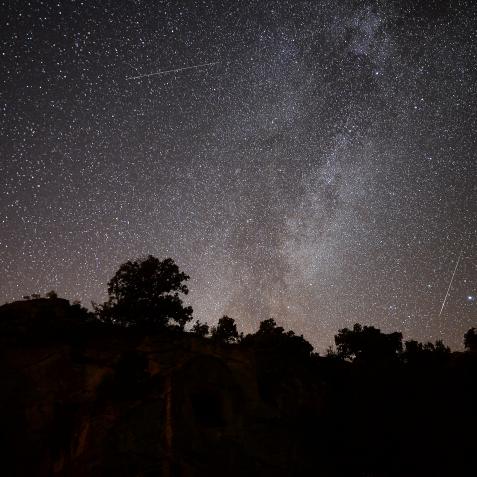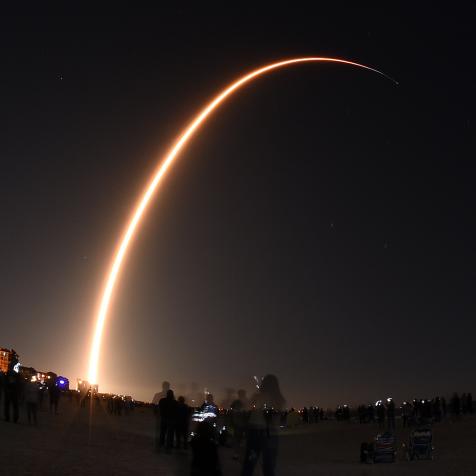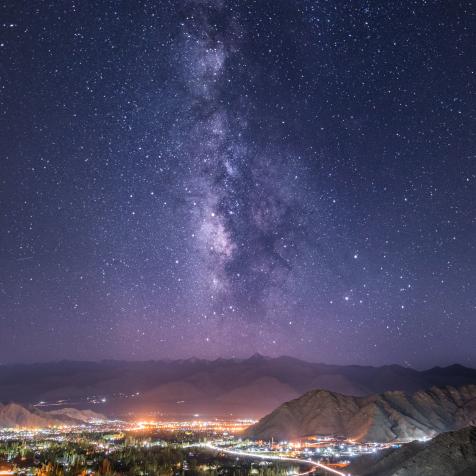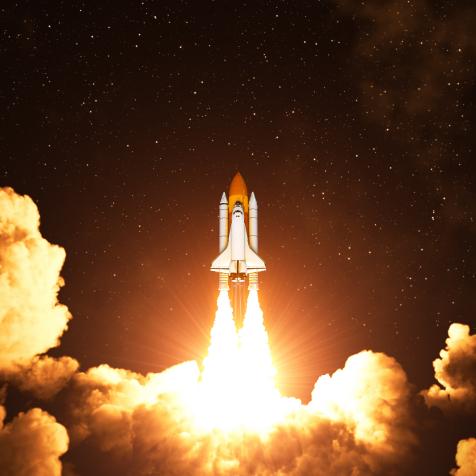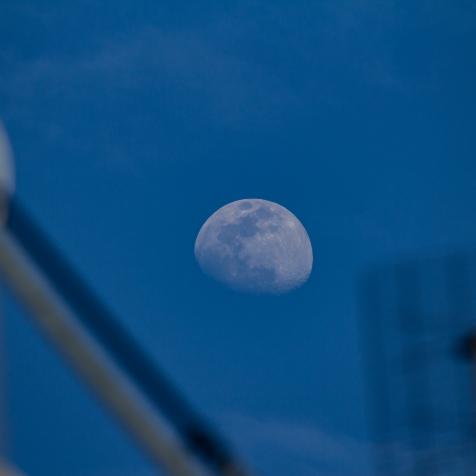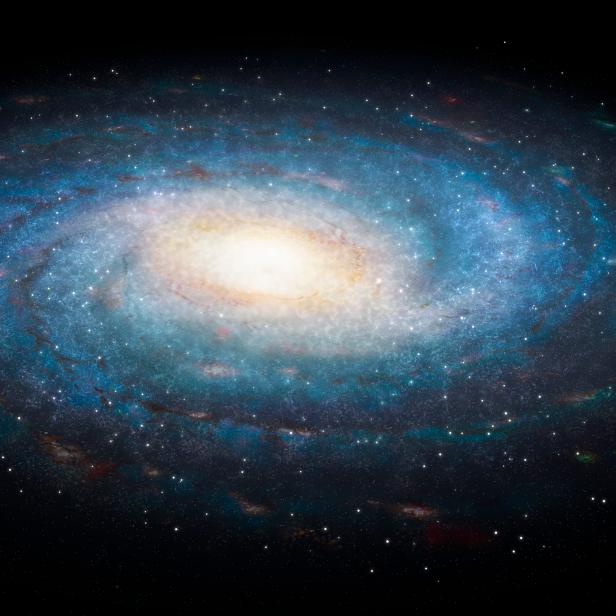
MARK GARLICK/SCIENCE PHOTO LIBRARY
Scientists Have Discovered Enormous Balloon-Like Structures in the Center of Our Galaxy
There's something really, really big in the middle of our Milky Way galaxy — one of the largest structures ever observed in the region, in fact.
An enormous pair of bubbles in an hourglass-like arrangement is sending out radio emissions hundreds of light-years beyond our galaxy. Scientists aren't sure how it formed, but its existence will likely teach us more about the supermassive black hole lurking in the center of the Milky Way.

The Hubble Heritage Team/AURA/STScI/NASA
Where Did It Come From?
The waves of radio emissions probably came from an eruption a few million years ago in the supermassive black hole at the center of the Milky Way. A black hole is a point in space with a gravitational pull so strong that nothing can escape — not even light.
For the study published in the journal Nature, astronomers peered at the center of our galaxy using the South African Radio Astronomy Observatory (SARAO) MeerKAT telescope. There they looked at radio emissions produced when magnetic fields accelerate electrons to a rate close to the speed of light — and that's when they spotted these structures.
This explosion was a dramatic moment in what is usually a quiet black hole, pointed out lead author Ian Heywood of the University of Oxford in a statement. "Even so," Heywood added, "the Milky Way's central black hole can — from time to time — become uncharacteristically active, flaring up as it periodically devours massive clumps of dust and gas. It's possible that one such feeding frenzy triggered powerful outbursts that inflated this previously unseen feature."
Why didn't we see these huge bubbles before? Well, there's a lot of radio emission coming from this region of the galaxy, astronomers pointed out. Seeing the emissions required MeerKAT's location under a pristine dark sky, and its ability to sense even faint radio waves.
So Much Mass, So Little Time
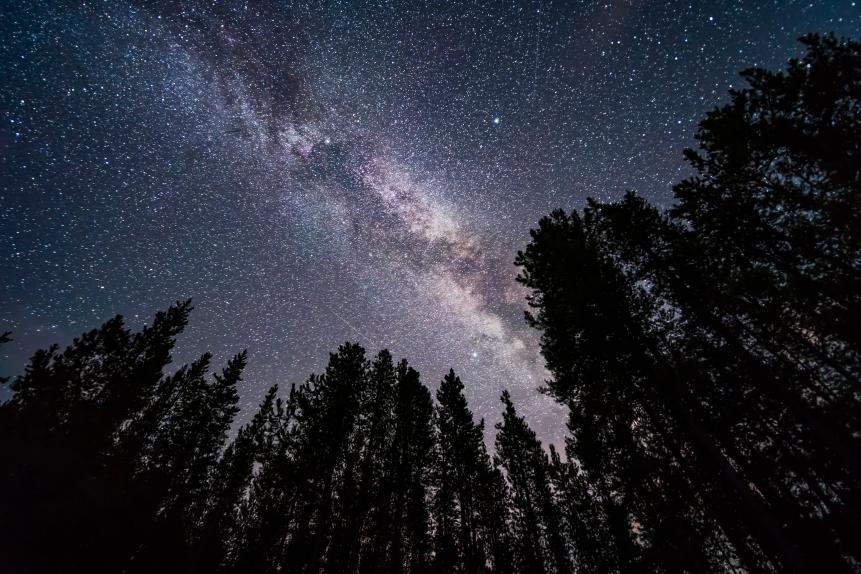
Getty Images/VW Pics
Many galaxies are home to supermassive black holes, just like the Milky Way. But there's still so much we need to know about the history and evolution of these objects. In fact, there are several classes of black holes. Astronomers suspect that smaller, star-sized black holes are formed when massive stars explode in a supernova, leaving behind a small, dense core with so much gravity that it collapses in on itself and becomes a gravitational point of no return.
Supermassive black holes can get much larger; for example, a galaxy called Holm 15A hosts a black hole that's estimated to be 40 billion times more massive than the sun — and 10,000 times more massive than our own galaxy's supermassive black hole. But the thing is, black holes take a long time to grow, and the supermassive black holes we've found didn't have enough time to grow to their current size using conventional methods. So how does such a massive structure come to be?
It's a mystery, but a theory postulated in one study in July suggests a chain reaction. Essentially, it involves a single black hole (whose origin story remains unknown) in the middle of a huge zone of gas clouds, in dense regions like the center of a galaxy. Energy radiating from the black hole would have caused gas clouds nearby to heat up and collapse into its gravitational well. With every new meal, the black hole would radiate more energy and heat up more gas clouds, which would themselves collapse. If there are enough gas clouds in the neighborhood, this could create a domino-like sequence of collapse, leading to a supermassive black hole.
'A Staggeringly Powerful Event'
Whatever caused that huge eruption from the Milky Way must have been big. "The shape and symmetry of what we have observed strongly suggests that a staggeringly powerful event happened a few million years ago very near our galaxy's central black hole," said William Cotton, a co-author on the new study.
According to that study, one possibility is that interstellar gas fell into the black hole and triggered an enormous explosion. Also possible? A flare-up of star formation nearby the black hole. That would have created shock waves, which could have caused gas bubbles near the Milky Way's center to heat up and expand.
But there's still so much for us to learn. In fact, senior author Yusef Zadeh has been studying this area of the Milky Way since the 1980s when he discovered long, narrow magnetic filaments tens of light-years long and one light-year wide — filaments "found nowhere else" in the region. These filaments are also full of high-speed electrons producing radio emissions. Even more interestingly, the newly found radio bubbles confine almost all of the known filaments. It's possible that whatever produced the radio bubbles also produced the radio emissions from the filaments, which sheds light on a mystery 35 years in the making.
This article first appeared on Curiosity.com.











